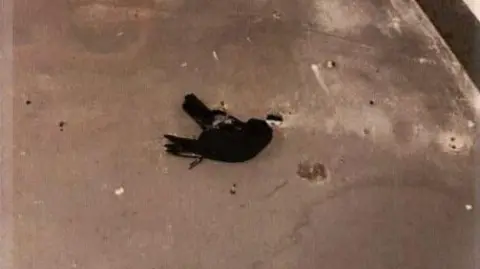The former head of estates for Scotland's biggest hospital has admitted he "dropped the ball" when addressing safety risks at the Queen Elizabeth University campus.
Ian Powrie told the Scottish Hospitals Inquiry it took him three years to read a report that warned the hospital’s water supply was at a high risk of contamination when it opened in 2015.
He said it was not until years later when there was an infection outbreak in the child cancer wards in April 2018 that testing found "systemic"' contamination of the water supply.
Mr Powrie said his time was spent firefighting numerous issues at the hospital, including sewage spilling into wards and water not draining properly from showers.
He felt he did not have enough staff for such a large and complex campus.
Taps linked to baby deaths
The inquiry is currently investigating the construction of the Queen Elizabeth University Hospital campus in Glasgow, which includes the Royal Hospital for Children, after issues at the flagship site were linked to the deaths of two children.
Mr Powrie said he had raised concerns before the hospital opened that there were not good enough control measures to prevent the potential build up of bacteria in the hospitals water supply.
He also said he had questioned plans to install 2,500 taps that had been linked to an infection outbreak in Northern Ireland where a number of babies died.
The inquiry heard that Health Protection Scotland (HPS) guidance recommended the flow regulators in the taps should be removed.
In 2018 the Glasgow site had about 2,500 Horne taps, which deliver water at a safe temperature to reduce the risk of scalding.
Mr Powrie, who retired in 2019, said: "I looked into that in partnership with Horne to say this is an edict that has come out and we need to apply and they said you can't do that on these taps, the regulator performs three different tasks, if you take them away you defeat the function of the tap.
"I raised this with the project team and that created a problem because obviously the guidance was saying one thing, we had a site that had been fitted out with these taps that couldn't be modified and it would affect the project programme."
Mr Powrie was asked to set up a meeting with the manufacturers, Health Protection Scotland and Health Facilities Scotland.
He said: "The outcome of the meeting was that HPS came back with the same opinion, that the regulator was still a point of risk and should be removed and gave three options of how that could be achieved on our project.
"One of the options was carry on as you are and manage the process. The other options were basically the same in different versions - remove the taps and put something else in."
Sewage discharges
Mr Powrie told the inquiry his bosses decided on the option of retaining the taps and putting in a management process.
He proposed a "system exchange" process where the taps would be taken away to be sanitised at 70C, a process that would take three minutes, with another sanitised tap put in its place while this was happening.
However by 2018 this had not been put into practice.
Mr Powrie also told the inquiry that in 2018 he and colleagues realised there were "systemic" problems with the water system after medical staff started to see positive results from patients in bloodstream tests.
A water technical group was set up to investigate the issues and it was decided to dose the water system with chemicals to address the problem.
The inquiry also heard Mr Powrie often felt he and his team were "firefighting" as they dealt with issues after the hospital opened in 2015, including blockages causing sewage discharges into wards and faults with the pneumatic transport system used to deliver samples from wards to laboratories.
An NHS Greater Glasgow and Clyde (NHSGGC) spokesperson said: "It would not be appropriate for NHSGGC as a core participant to the inquiry to comment on an individual's evidence as it is heard given that there is more evidence to be heard."
Feral pigeons
Earlier this week the inquiry heard evidence that pigeons posed a "significant health and safety issue" at the Queen Elizabeth University Hospital.
A report by pest control company GP Environmental dated 8 January 2019, found that a large population of feral pigeons were present across the site including walkways, plantrooms and ledges.
 Scottish Hospitals Inquiry
Scottish Hospitals InquiryIt was published shortly after two patients who were being treated at the hospital died after contracting a cryptococcus infection linked to pigeon droppings.
Counsel to the inquiry, Fred Mackintosh KC, asked former estates manager Colin Purden why the scale of the issue and the scale of the work required was not reported to infection control.
Mr Purden said: "The information wasn't joined up, so I don't think a pattern or the scale of the problem had come to anybody's attention."
He admitted there not a system in place to pull information together when people spotted a problem.
The inquiry, which is being held in Edinburgh, continues.


Post a Comment